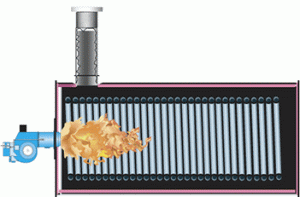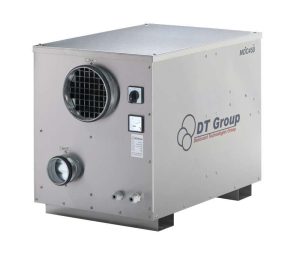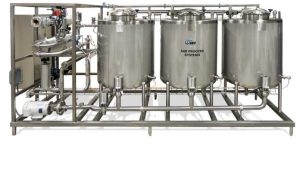Corrosion under the connection liners in plate heat exchangers can cause significant problems. The key is to learn how the corrosion happens so that costly frame replacements can be avoided.

the frame plate may be a
sign of a serious corrosion
problem.
When performing routine visual inspections of your plate heat exchangers, take a moment to look the unit over carefully for any external leaks. If a leak is present at the frame plate (usually where the pipes are connected), there may be a corrosion issue that needs attention immediately before it becomes a much larger problem.
A leak which presents at this location is likely a sign that one of the process fluids is coming in contact with the frame plate which is often painted carbon steel. The connections in the plate heat exchanger (often a studded port connection) are usually lined with the same material used to make the plates. This lining material must be compatible with the process fluids entering the heat exchanger. However, the carbon steel frame (even if covered with a high quality paint system), may experience corrosion if allowed to come in contact with the process fluids.
The connections liners include either a flared or welded ring on both the inside and outside of the frame plate. These rings are designed to provide a sealing surface for the flanged connection on the pipes (outside the frame plate) and the four (4) ring gaskets on the first plate of the heat exchanger plate pack. With all four (4) of the plate ports gasketed off, this allows the fluids to “jump” over the channel between the first heat transfer plate and the carbon steel frame plate. The fluid can then enter the channels between the heat transfer plates.
The rubber gasket on the first plate of most plate packs is generally one of two designs. Either the gasket is custom molded to be used as a frame plate gasket (in which case it’s just put onto the plate like all of the other gaskets), or the frame plate gasket is assembled from two (2) standard channel plate gaskets as shown in Figure 2. Note that if the gaskets are clip-on style gaskets, the tabs are removed and the gasket must be held in place by double sided tape or an appropriate adhesive.

gaskets together to form a frame plate gasket.
Generally speaking, from plate heat exchangers models that are considered small or medium (maybe up to 6-8 feet tall), most manufacturers splice together two (2) channel gaskets to form the frame plate gasket which is mounted to the first plate in the plate pack. For larger units, a custom molded frame plate gasket may be available.

should seal on the inside of the frame plate.
Process fluid may be able to reach the carbon steel frame plate for several reasons: the frame plate gasket may have been improperly assembled, the ring gaskets may not be sealing properly on the face of the connection liner ring, the ring gaskets have experienced degradation from the process fluids or age, or a combination of these
In some cases, if the gaskets in the plate heat exchanger are far past their useful life and a leak begins at the frame plate ring gaskets, process fluid may be allowed to slip behind the connection liner and start to corrode the carbon steel plate. Even though this may initially present as a very minor leak for which repair could be delayed, doing so risk much more significant problems in the future.
Corrosion under the connection liner will eventually allow the liner to deform due to the loss of support. Without a flush, firm surface to seal against, the frame plate ring gaskets will continue to lose sealing force and the leak will increase in severity over time until a larger portion of the frame has corroded to a point where it must be replaced.
If you spot a leak in your plate heat exchanger, it’s trying you tell you something. Today, with advances in gasket materials, there’s no reason to have a leaking plate heat exchanger in your facility. There are many causes, but each of them can and should be addressed. Sometimes the solutions are easy and inexpensive, especially if they’re addressed early. However, if they’re left for too long, even a seemingly small leak can cause big problems down the road.



